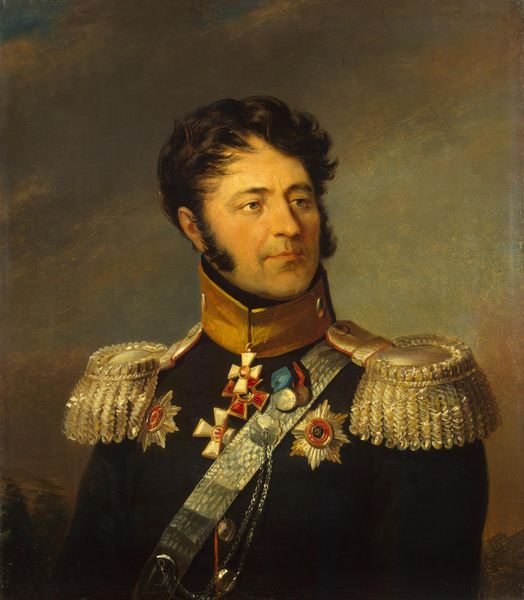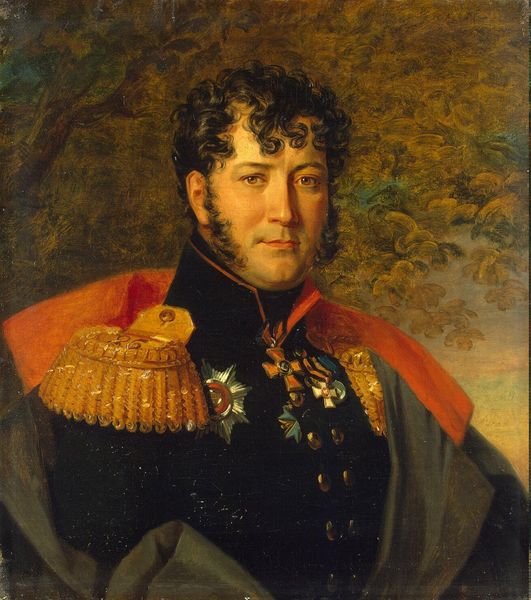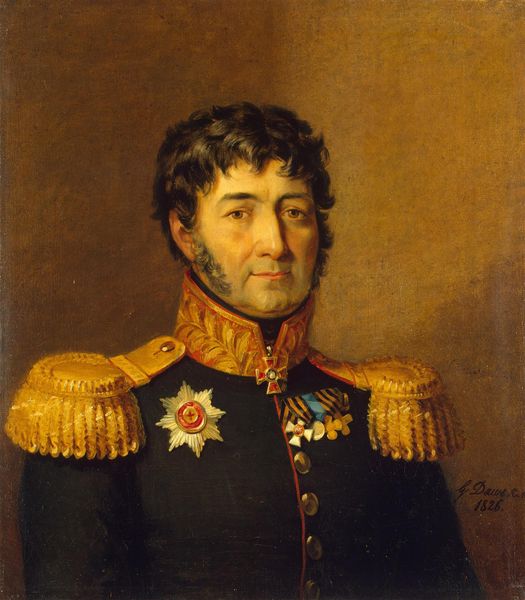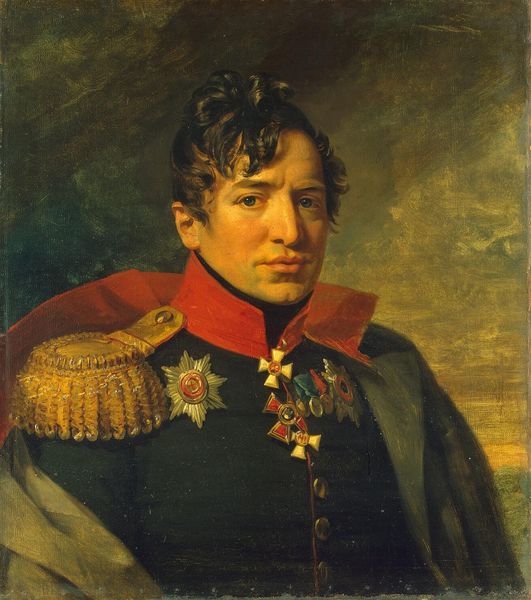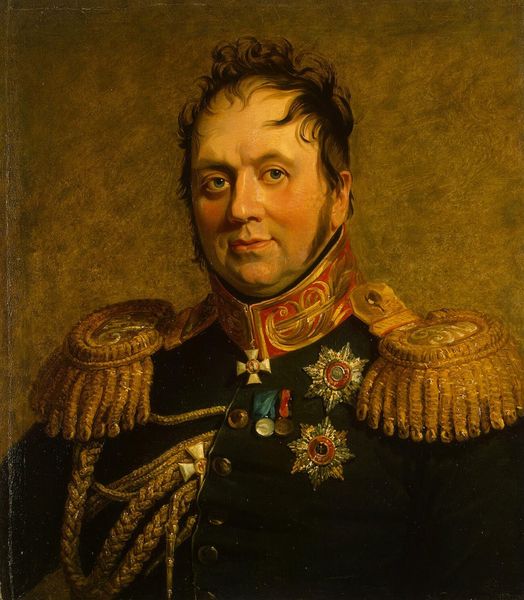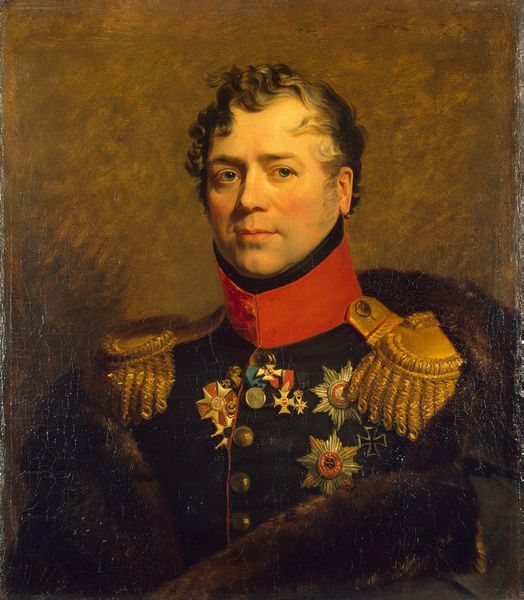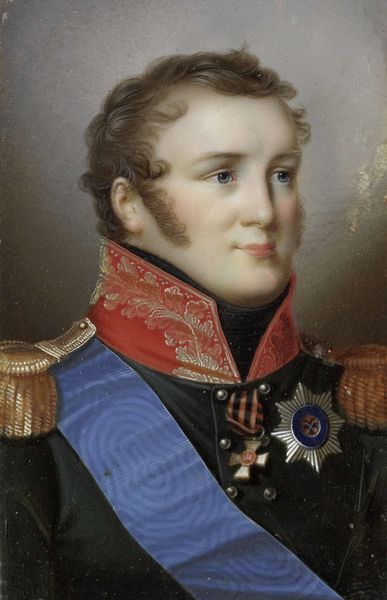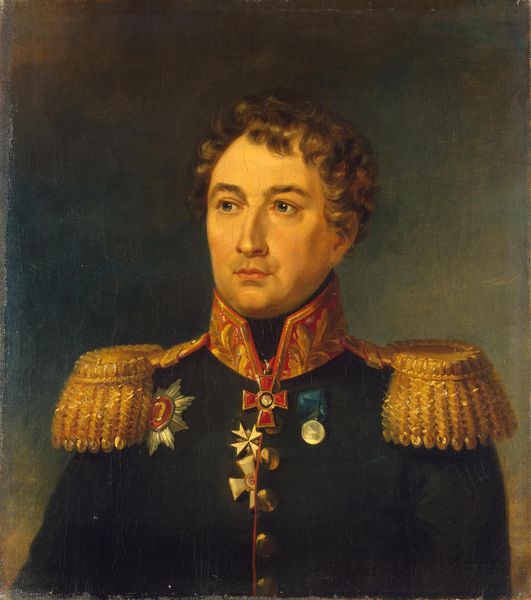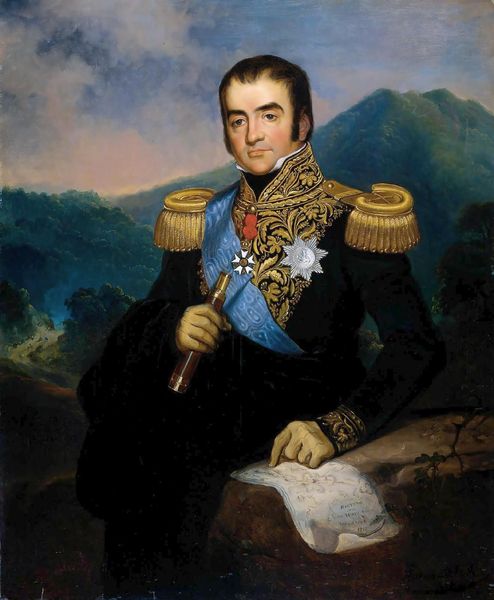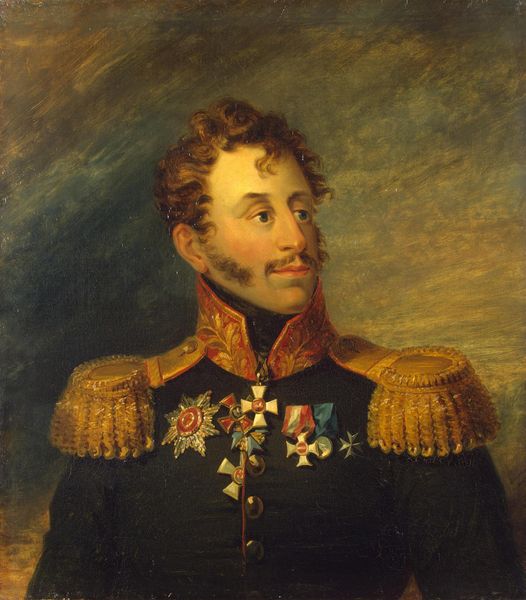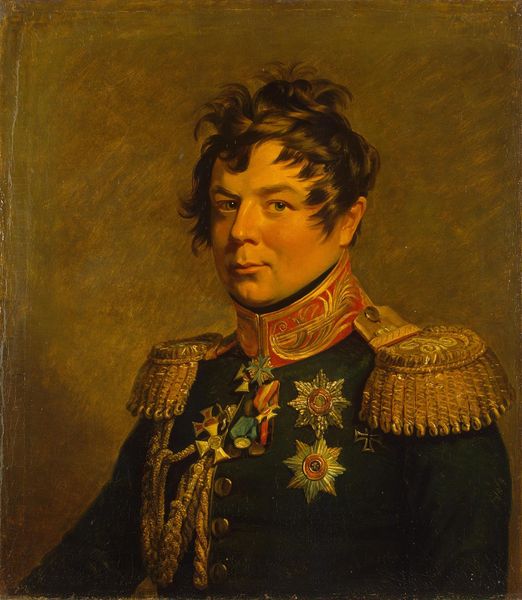
painting
#
portrait
#
figurative
#
character portrait
#
painting
#
portrait subject
#
landscape
#
portrait reference
#
portrait head and shoulder
#
romanticism
#
portrait drawing
#
history-painting
#
facial portrait
#
portrait art
#
fine art portrait
#
celebrity portrait
#
digital portrait
Copyright: Public Domain: Artvee
Editor: Here we have "Portrait Of Colonel Auguste-Frederic-Bon-Amour, Marquis De Talhouët" by Horace Vernet, a painting depicting a stately gentleman in military garb. I’m struck by the contrast between his elaborate uniform and the suggestion of a battle scene in the background. What’s your take on it? Curator: It’s fascinating to consider this portrait through the lens of power, class, and representation. Vernet’s portrayal of the Marquis naturalizes a very specific vision of French aristocracy during a period of immense social upheaval. How does the Marquis’s detailed attire – all those buttons and tassels – function as a signifier? Editor: It screams status, wealth, privilege… a sort of...visual barrier, perhaps? Curator: Precisely. The clothing can be read as a form of symbolic capital, reflecting a system where social status is not merely inherent, but meticulously constructed and performed. Consider the historical context: Did the rise of Napoleon change the rules regarding inherited status, or simply change who could access its symbols? And how does this image serve to reinforce or challenge that changing social order? Editor: I hadn’t considered the Napoleonic influence. So, it’s more than just a picture of a rich guy? Curator: It's about how wealth and power visualize and assert themselves during times of social and political transition. The Marquis is essentially selling an idea of established order as it responds to very material shifts in power dynamics. He's participating in a theatre of power, using the canvas to reiterate established social narratives, whilst war and political re-shaping occur on the fringes. Editor: I see what you mean. Thanks, it definitely changes how I see it! Curator: Glad to bring a new dimension to your thinking about portraiture.
Comments
No comments
Be the first to comment and join the conversation on the ultimate creative platform.

